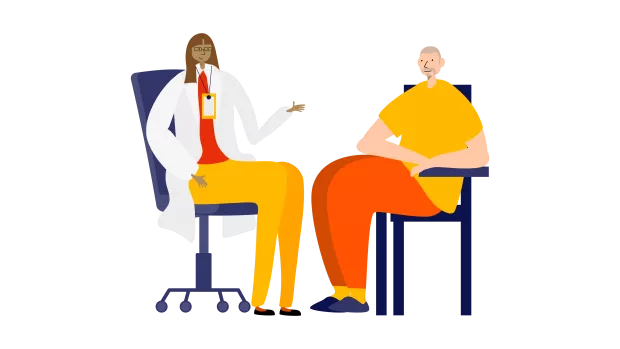
Ponesimod (Ponvory)
Ponesimod is a disease modifying therapy for 'active' relapsing MS. Its brand name is Ponvory and you take it as a tablet.
Read the latest information about DMTs and coronavirus COVID-19
- Who can take ponesimod (Ponvory)?
- How does ponesimod (Ponvory) work?
- How well does ponesimod (Ponvory) work?
- What are the side effects of ponesimod (Ponvory)?
- Ponesimod (Ponvory) and pregnancy, breastfeeding and contraception
Who can take ponesimod (Ponvory)?
Across the UK you can have ponesimod if:
- you have ‘active’ relapsing MS. That means you’ve had a recent relapse and/or MRI scans show that you have new lesions.
How does ponesimod (Ponvory) work?
Special types of cells in your immune system, called T and B cells, are thought to cause a lot of the damage in MS. They normally kill viruses and bacteria that get into your body. But in MS they damage your nerves. They do this by stripping away the myelin covering that protects the nerve. Ponesimod (Ponvory) stops these cells leaving your lymph nodes where they're made. This means fewer of them get into your brain and spinal cord where they would attack myelin around the nerves there.
Ponesimod is a tablet you take once a day.
How well does ponesimod (Ponvory) work?
A trial compared ponesimod (Ponvory) to teriflunomide (Aubagio), a drug already used to treat MS. Ponesimod was significantly better than teriflunomide at reducing how many relapses people got. They also had fewer new lesions on their MRI scans.
Ponesimod was better at slowing down how fast MS made people’s brains shrank. People in the trial who took ponesimod also said they had fewer fatigue symptoms compared to people on the other drug.
Relapses dropped by: 30.5% compared to teriflunomide
This means that over the two years of the trial, on average, people saw a 30.5% drop in the number of relapses they had. This was compared to people who took teriflunomide.
When it comes to disability getting worse, ponesimod was no better or worse than teriflunomide at slowing this down.
What are the side effects of ponesimod (Ponvory)?
In this ponesimod (Ponvory) trial more than one in ten people got colds and chest infections. A similar number had a rise in the levels of their liver enzymes. Over time this went back to normal levels for most people.
Less common side effects were other viral infections, shortness of breath, headache, dizziness, anxiety or depression, and mild cases of raised blood pressure.
About one in a hundred people got a swelling at the back of the eye called macular oedema. One in 70 had a seizure. Certain types of skin cancer may also be a side effect as this happened to around one in a hundred people in the trial.
Ponesimod (Ponvory) and pregnancy, breastfeeding and contraception
Pregnancy
We don’t have research on whether ponesimod (Ponvory) can harm unborn babies. But we know it can cause this kind of damage in animals. If you can get pregnant, you need a negative pregnancy test result before starting this treatment. You must avoid getting pregnant while taking ponesimod, and, if you decide to stop taking it, for one week after your final dose.
If you and your partner want to have a child, discuss this with your neurologist. If you think you’ve become pregnant, let your medical team know at once. Never stop your DMT without first getting their advice.
Breastfeeding
Studies in animals show ponesimod (Ponvory) can get into breast milk. So if you want to breastfeed, you shouldn’t feed your baby this way while on this drug.
Contraception
If you can get pregnant, you must use reliable contraception (the ‘pill’, condom, an implant or IUD) while you’re on ponesimod (Ponvory). If you decide to stop taking this drug, you should keep using contraception for one week after your final dose.


